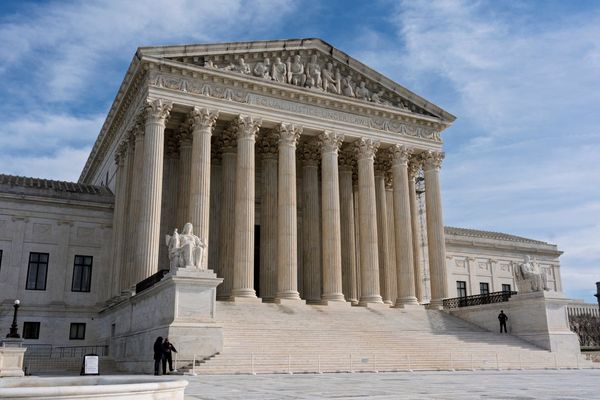LOS ANGELES — With California enduring historic drought amplified by global warming, Gov. Gavin Newsom on Thursday released a new plan to adapt to the state’s hotter, drier future by capturing and storing more water, recycling more wastewater and desalinating seawater and salty groundwater.
The governor’s new water-supply strategy, detailed in a 16-page document, lays out a series of actions aimed at preparing the state for an estimated 10% decrease in California’s water supply by 2040 because of higher temperatures and decreased runoff. The plan focuses on accelerating infrastructure projects, boosting conservation and upgrading the state’s water system to match the increasing pace of climate change, securing enough water for an estimated 8.4 million households.
“The hots are getting a lot hotter. The dries are getting a lot drier,” Newsom said. “We have to adapt to that new reality and we have to change our approach.”
Newsom called it “an aggressive plan to rebuild the way we source, store and deliver water so our kids and grandkids can continue to call California home in this hotter, drier climate.”
Newsom spoke about the plan in Antioch, where a desalination plant is being built to treat brackish water.
Newsom also announced the appointment of his gubernatorial rival and former Los Angeles Mayor Antonio Villaraigosa as his new infrastructure czar.
The state plan calls for expanding water storage capacity above and below ground by 4 million acre-feet; expanding average groundwater recharge by 500,000 acre-feet; accelerating wastewater recycling projects; building projects to capture more runoff during storms; and desalination of ocean water and salty groundwater.
The projected loss of 10% of the state’s water supply within two decades translates to losing 6 million to 9 million acre-feet per year on average — more than the volume of Shasta Lake, the state’s largest reservoir, which holds 4.5 million acre-feet.
The state’s plan refers to how warmer temperatures unleashed by rising levels of greenhouse gases are leading to what many scientists describe as aridification. A warmer climate makes the atmosphere “thirstier,” pulling more moisture from the landscape through evaporation and increasing the amount plants take in, leaving less runoff flowing into streams and rivers.
“Regardless of drought or flood, in this changed climate there will be less water available for people to use,” the state plan says. “To match the pace of climate change, California must move smarter and faster to update our water systems. The modernization of our water systems will help replenish the water California will lose due to hotter, drier weather.”
The extreme dryness and high temperatures during the 2012-16 drought, closely followed by the current drought since 2020, “send a strong climate signal that we must heed,” the plan says. It says these more extreme conditions make clear that California should “double down” on a set of actions to bolster the state’s water supply “with haste.”
State officials said executing the strategy, which builds on the governor’s water resilience portfolio released in 2020, will require coordination with local and federal agencies and tribes.
“The best science tells us that we need to act now to adapt to California’s water future. Climate change means drought won’t just stick around for two years at a time like it historically has,” Newsom said in a statement. “Extreme weather is a permanent fixture here in the American West and California will adapt to this new reality.”
The plan includes targets and timelines, such as expanding desalination of brackish groundwater to 84,000 acre-feet by 2040, and boosting the state’s capacity to capture storm water by 500,000 acre-feet by 2040. For comparison, the total annual water use of Los Angeles is nearly 500,000 acre-feet.
Among other things, the state plan calls for creating a groundwater recharge coordinating committee to help implement projects that will capture water and replenish aquifers.
To offset the increased evaporation and reduction in supplies brought on by the changing climate, the plan says, “California must capture, recycle, de-salt, and conserve more water.” It says the new set of priorities will “put to use water that would otherwise be unusable, stretch supplies with efficiency, and expand our capacity to bank water from big storms for dry times.”
The plan says this approach is designed for a “climate prone to weather whiplash.”







